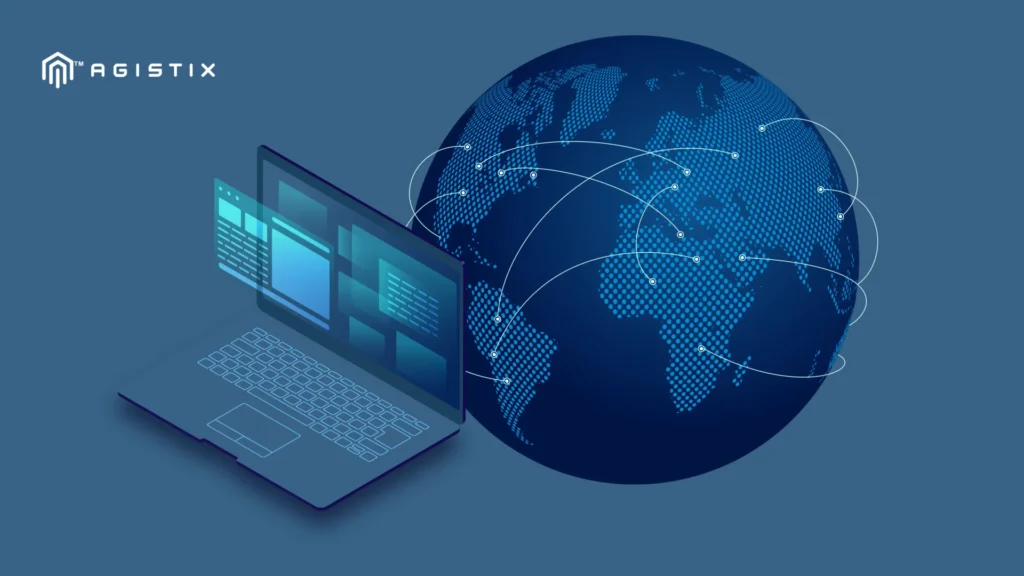October 9, 2024 - 7 minutes read

What Is Real-Time Visibility, and How Does It Transform Supply Chain Logistics?
It seems that the only constant in the global economy is unpredictability, and this comes at a cost for many businesses. A recent Gartner survey found that 63% of supply chain professionals expect a loss in revenue when exposed to uncertainty, while a mere 9% anticipate revenue gains. This highlights the critical role of achieving supply chain resilience in today’s complex market. The trademarks of resilience include foreseeing potential risks, reacting quickly to challenges, and maintaining an up-to-date, detailed oversight of the supply chain from beginning to end.
Achieving comprehensive, real-time supply chain visibility — a clear view of every step from raw material sourcing to final delivery — is vital for proactive management and informed decision-making. However, fragmented systems, data silos, and outdated technologies often create blind spots within the supply chain, leading to inefficiencies and other challenges.
Real-time visibility in supply chain logistics
Real-time visibility in the supply chain is fundamental to contemporary logistics, providing a dynamic and integrative perspective across the entire ecosystem.
Leveraging such timely data, companies can better understand their supply chain activities, enabling them to anticipate and mitigate potential issues, streamline operations, and elevate their customer service experience.
How real-time visibility transforms traditional logistics practices
Real-time visibility goes beyond simply having access to data; it involves using that information to transform traditional logistics methods, moving from a reactive to a proactive strategy.
Early issue detection and proactive response
Previously, supply chain disruptions often went unnoticed until it was too late. Real-time visibility helps enable alerts about transportation hold-ups, low inventory levels, or quality concerns that could impact supply chain efficiency. This allows companies to quickly intervene by redirecting shipments, tweaking production timelines, or engaging in open communication with customers to set realistic expectations. This proactive strategy reduces the fallout from interruptions, boosts customer satisfaction, and protects the business’s reputation.
Automated notifications and better communication
The era of countless phone calls and emails to monitor shipments or resolve problems is over. Real-time visibility platforms can send automated alerts and notifications, keeping everyone involved up-to-date on important developments and enabling timely responses. This improved communication method encourages teamwork and empowers stakeholders to tackle obstacles collaboratively.
Informed decision-making
Access to real-time data creates a robust foundation for making well-informed decisions. By scrutinizing historical and current data about routing, carrier efficiency, and stock amounts, companies can shorten processing times, refine their transport plans, and improve inventory control.
Enhanced compliance and risk mitigation
Tracking data in real time guarantees compliance with regulatory mandates and industry benchmarks, significantly reducing the risk of fines and penalties. Visibility tooltools proactively identify potential risks and offer backup strategies, helping organizations anticipate unexpected events, natural disasters, or geopolitical turmoil and minimize their impact.
Adopting real-time visibility yields long-term benefits, helping businesses manage the complexities of today’s supply chains with confidence. However, the cost of poor visibility is steep, significantly impacting operational efficiency.The high cost of poor visibility
In today’s demanding environment, customers expect transparency at every level. Delays or logistics issues can affect customer satisfaction, a brand’s perceived value, and profit margins.
Lacking real-time data leads to a lack of transparency in the supply chain, obstructing timely and informed decisions while subjecting companies to various obstacles.
- Impact on customer satisfaction and retention
Delayed shipments frustrate customers. A recent survey shows that 84% of consumers are reluctant to shop with a company again after a disappointing delivery experience.
Additionally, the absence of tracking updates can result in communication gaps about delivery statuses and accurate ETAs. Without this information, companies may struggle to keep their customers informed, leading to dissatisfaction and eroding loyal brand relationships.- Difficulty in measuring performance
Key performance indicator (KPI) monitoring is a must for identifying improvement opportunities within the supply chain. Operating without real-time data forces companies to depend on old figures and guesswork, hindering the ability to identify problem areas, monitor carrier performance, and evaluate the performance of logistics strategies.- Increased overhead costs
Poor real-time visibility logistics create a breeding ground for inefficiencies, directly impacting a company’s profitability. Without real-time insights into demand and inventory levels, companies may overstock to avoid stockouts, tying up valuable capital in holding costs such as warehousing, insurance, and the risk of obsolescence. Moreover, unexpected delays or disruptions often result in costly expedited shipping to meet customer deadlines, further eroding profit margins. The lack of automated tracking and communication tools makes these challenges even harder, forcing organizations to rely on manual workflows that are time-consuming, error-prone, and costly.
Companies must adopt visibility tools that provide instant data and insights to stay competitive and professional. By doing so, they can actively oversee logistics, reduce potential risks, and enhance customer satisfaction, protecting their profitability and promoting sustained success.Benefits of real-time visibility
Companies can enhance logistics operations through real-time transportation visibility capabilities, actively mitigate delays, and maximize resources. Among the benefits are:
- Proactive logistics management: Real-time monitoring allows companies to make data-driven decisions regarding routing, scheduling, and customer communication quickly, minimizing the impact of disruptions.
- Cost-efficient transportation: Access to live transportation data enables businesses to optimize routes, strategically select carriers, and enhance overall logistics efficiency for significant cost savings.
- Optimized warehouse performance: Real-time visibility into inventory and warehouse operations helps simplify processes to improve productivity, reduce labor costs, and maximize accuracy.
- Better customer experience: Real-time tracking and timely communication about status updates help build trust, contributing to a superior customer experience.
- Data-driven continuous improvement: Historical data analysis provides valuable insights into trends and patterns, helping to optimize processes, improve carrier performance, and make informed decisions that drive long-term efficiency.
Analysis of carrier performance, transportation costs, and other vital metrics reveals areas for improvement, informs negotiation strategies with carriers, and facilitates the optimization of transportation strategies. Furthermore, analyzing historical sales data and market trends enhances demand forecasting accuracy, assisting businesses to fine-tune inventory levels and mitigate the risk of stockouts or overstocks.
How to achieve real-time visibility
Fragmented data and limited visibility in complex supply chains often cause costly inefficiencies and shipment delays.
However, businesses can gain a comprehensive, real-time view of their operation by strategically implementing visibility measures.
Integrations and interoperability
Effective data management is at the core of today’s interconnected supply chains and is integral to achieving real-time transportation visibility. Businesses are tasked with integrating various internal and external systems, including ERPs, TMSs, and WMSs to facilitate an uninterrupted flow of information.
Thorough data mapping, using APIs for smooth data exchange, standardizing data formats, and adopting cloud-based solutions to enhance real-time access and collaboration are essential to this process.
IoT devices
The Internet of Things (IoT) delivers detailed, up-to-the-minute insights into shipments’ movements, condition, and status. By equipping cargo or assets with sensors and RFID tags, companies can track temperature, humidity, exposure to light, and other impacts. This instantaneous data enables companies to proactively address issues, ensure the integrity of products, and refine inventory control. Alerts about deviations from planned routes or unexpected delays allow companies to respond and implement necessary adjustments quickly.
Partner collaboration
Achieving visibility across the supply chain requires effective teamwork with suppliers, carriers, and relevant parties. Eliminating data silos and promoting instantaneous data exchange creates a cooperative atmosphere that enhances transparency, builds trust, and improves agile responses. In the intricate web of global supply chains, where partners might span multiple time zones and face different obstacles, the ability to share updates and communicate smoothly in real time is critical for success.
The power of supply chain visibility platforms
To fully benefit from collaboration and real-time data, companies need a strong supply chain visibility platform. These are a supply chain’s backbone, collecting and centralizing live data from different sources, eliminating information silos, and providing a cohesive operational view. With real-time visibility platforms, stakeholders gain insights that support informed decision-making and enable preventive measures against potential disruptions.
Platforms like Agistix offer a comprehensive solution that outperforms traditional visibility tools. Through seamless integration with existing systems and advanced analytics, Agistix delivers real-time insights into every facet of the supply chain. This helps businesses to:
- Proactively manage exceptions as they receive alerts for potential delays or disruptions, allowing for timely intervention and prevention of costly issues.
- Optimize transportation by gaining instant visibility into shipment locations and carrier performance to streamline routes and select the most cost-effective options.
- Improve collaboration by sharing information through customizable microsites that permit stakeholders to self-serve critical data and make informed decisions.
With Agistix, businesses can upgrade their supply chains into agile, responsive, and efficient networks capable of handling the complexities of global logistics. Schedule a demo of the Agistix platform to see it in action and learn what it can do for your supply chain operations.


